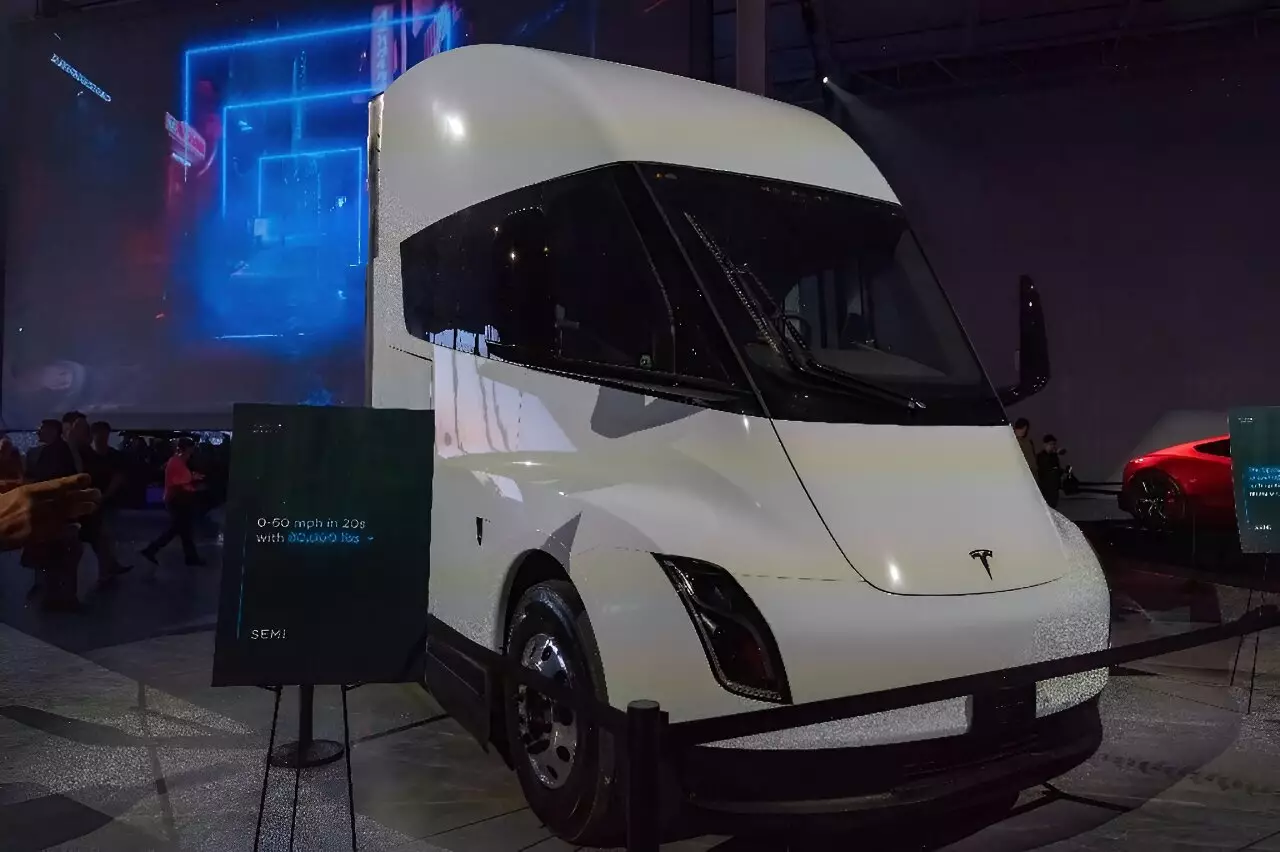In a significant incident involving an electric vehicle, California firefighters were tasked with extinguishing a blaze from a Tesla Semi truck that had suffered a crash. According to the National Transportation Safety Board (NTSB), around 190,000 liters of water were utilized to contain the fire that erupted after the vehicle departed from the roadway. This alarming event serves as a reminder of the potential hazards associated with electric vehicles, particularly regarding their battery systems in emergency situations.
The accident occurred early on August 19 near Emigrant Gap, California, when the Tesla Semi, operated by one of its employees, veered off the road and collided with a tree. This crash not only raised questions about the safety features of electric trucks but also illustrated the complexities involved in managing fire incidents resulting from high-capacity lithium-ion batteries. The vehicle travelled off the main road and came to rest against a cluster of trees, fortunately without causing any injuries to the driver. However, the post-crash fire ignited by the vehicle’s battery system catalyzed a substantial mobilization of firefighting resources.
Firefighters quickly realized the unique challenges posed by the electric truck’s fire. Containing lithium-ion battery fires often requires specialized strategies, as traditional firefighting techniques may not be fully effective. The NTSB reported that a staggering amount of water—50,000 gallons, equivalent to nearly 190,000 liters—was needed not only to douse the flames but also to cool down the vehicle’s batteries to ensure they did not reignite.
In addition to the ground efforts, aviation resources were employed: an aircraft was dispatched to drop fire retardant in the area surrounding the crash site as a precaution. This multifaceted response highlights the growing need for the integration of advanced firefighting techniques tailored to electric vehicles, especially as their presence on the roads continues to expand.
The incident touches on a pressing issue regarding the safety of electric vehicles. As climate concerns drive the push for electric alternatives, their unique challenges, particularly in emergencies, require serious consideration from manufacturers and regulatory bodies alike. The Tesla Semi, while innovative, has now faced scrutiny regarding its resilience in the event of such accidents.
As Tesla’s plans for large-scale production roll out, with aims for completion by the end of 2025, the company must address potential safety concerns of their lithium-ion battery systems. Early deployments of these trucks, including deliveries to clients like PepsiCo, could give rise to unforeseen safety challenges that require proactive measures and robust infrastructure to combat.
This incident serves as a critical wake-up call for stakeholders across the electric vehicle landscape. It urges manufacturers, fire departments, and policymakers to reevaluate safety protocols tailored for electric vehicles to prevent potential disasters during accidents. As electric vehicles grow in popularity, it is crucial to ensure that safety mechanisms not only keep pace with innovation but also evolve in response to the unique challenges they present. Only then can the transition to electric transportation be considered genuinely safe and sustainable.

